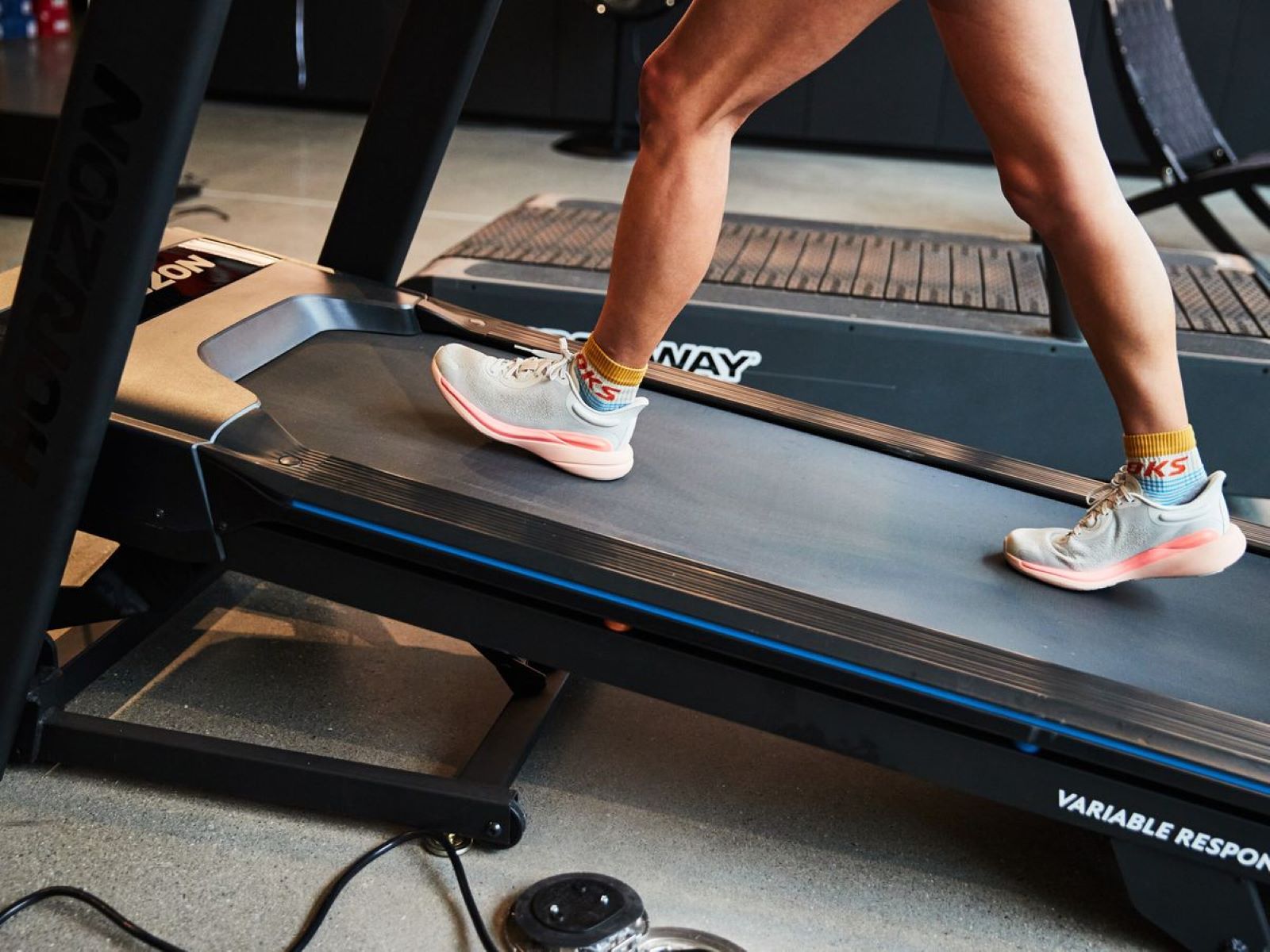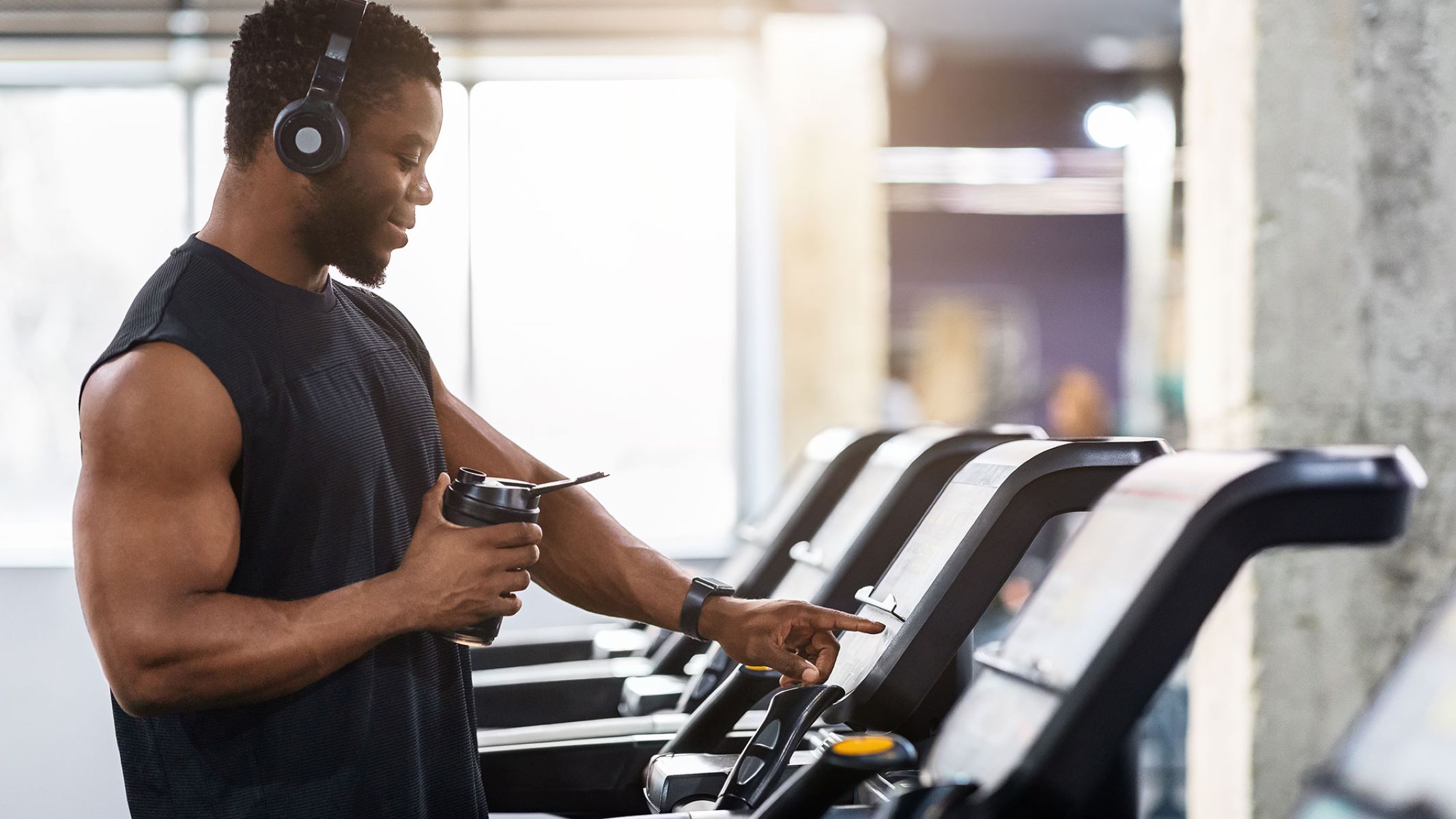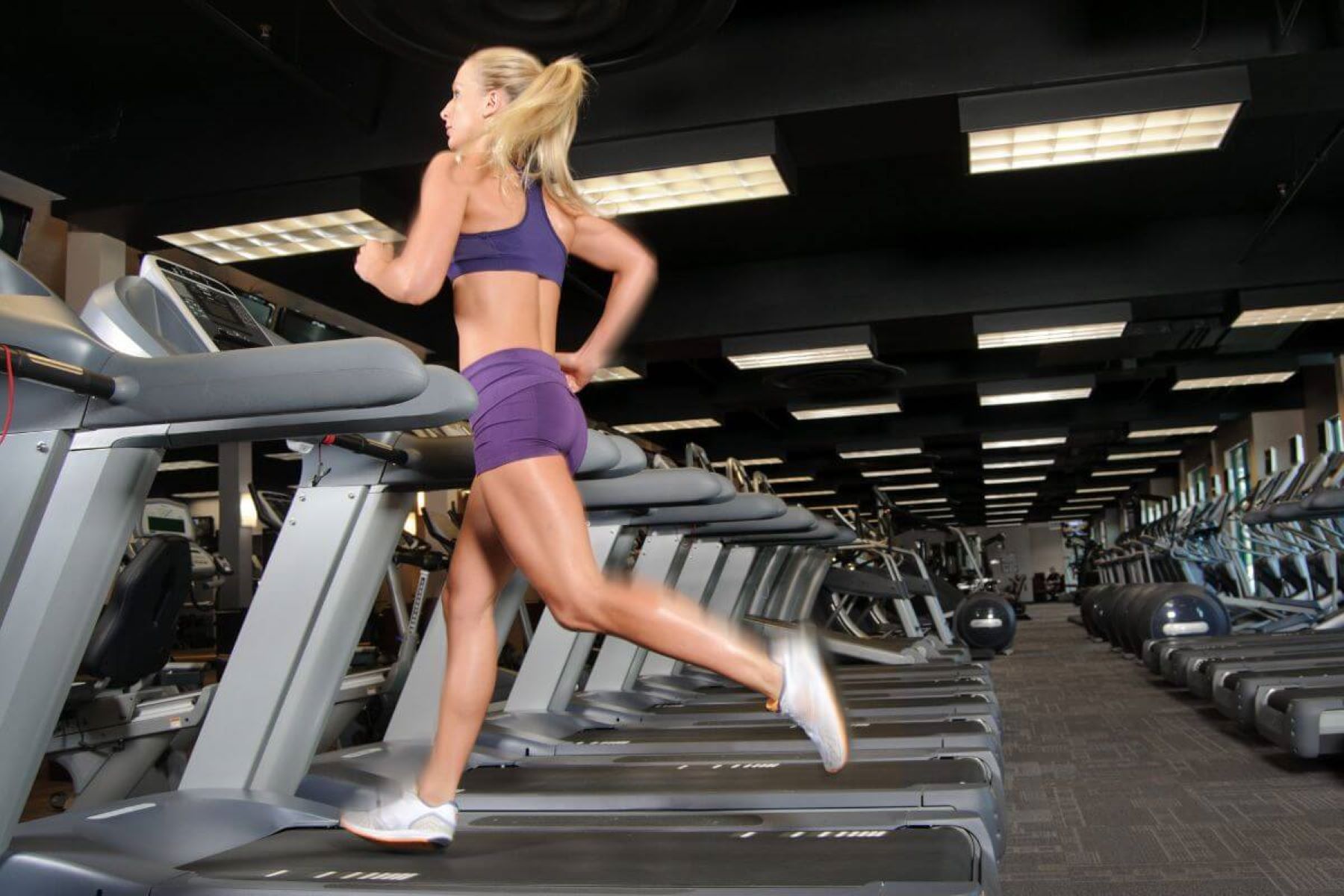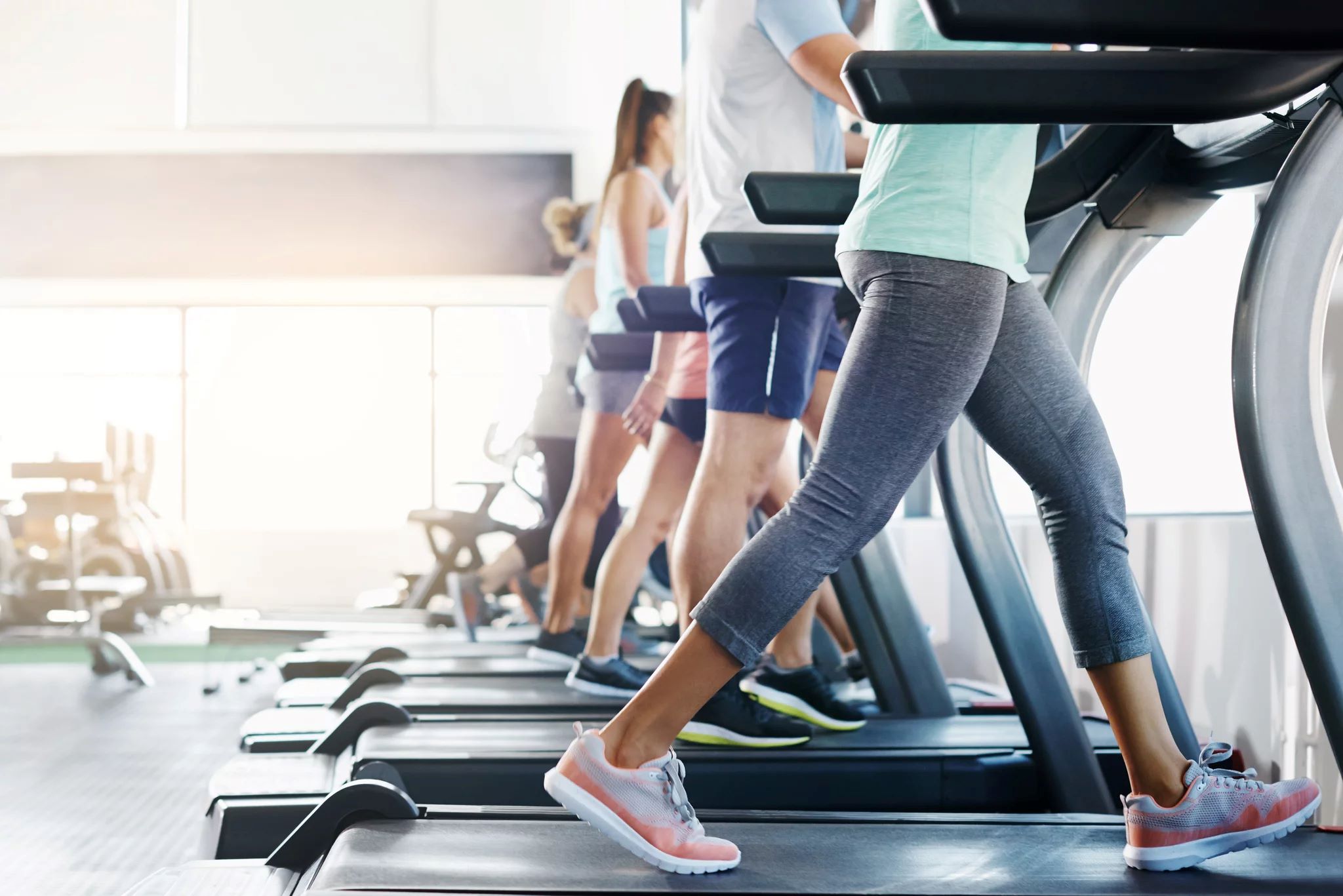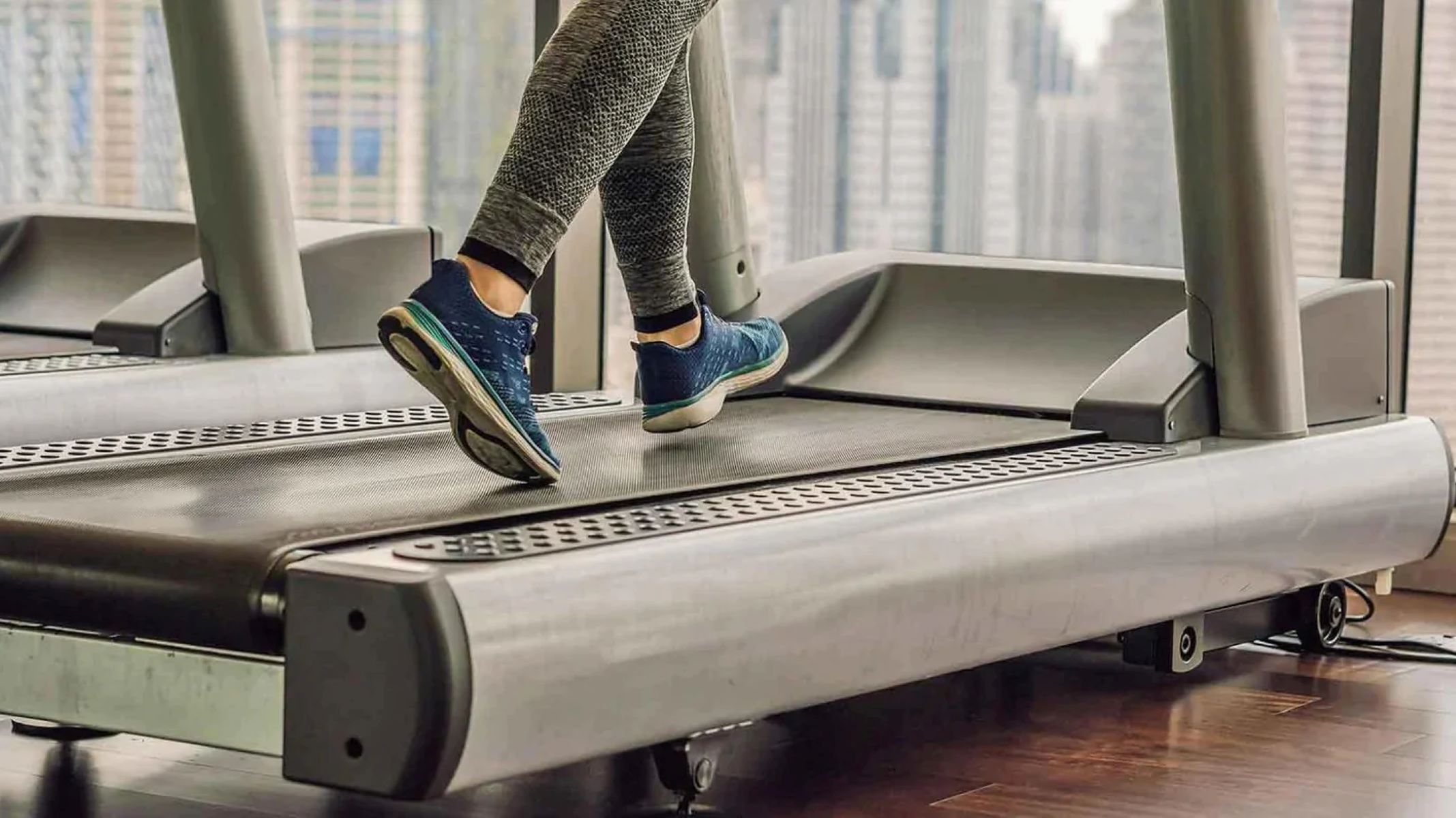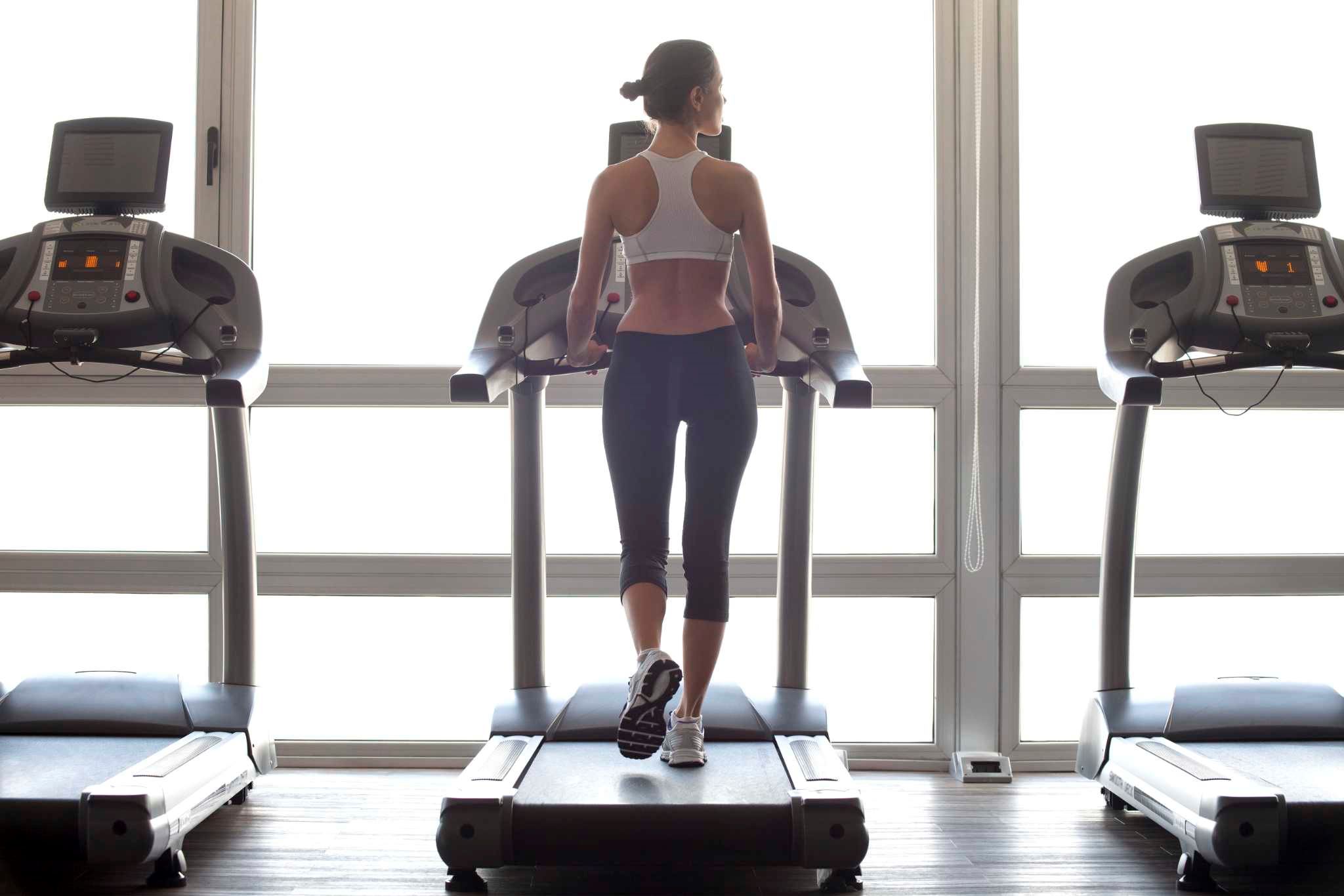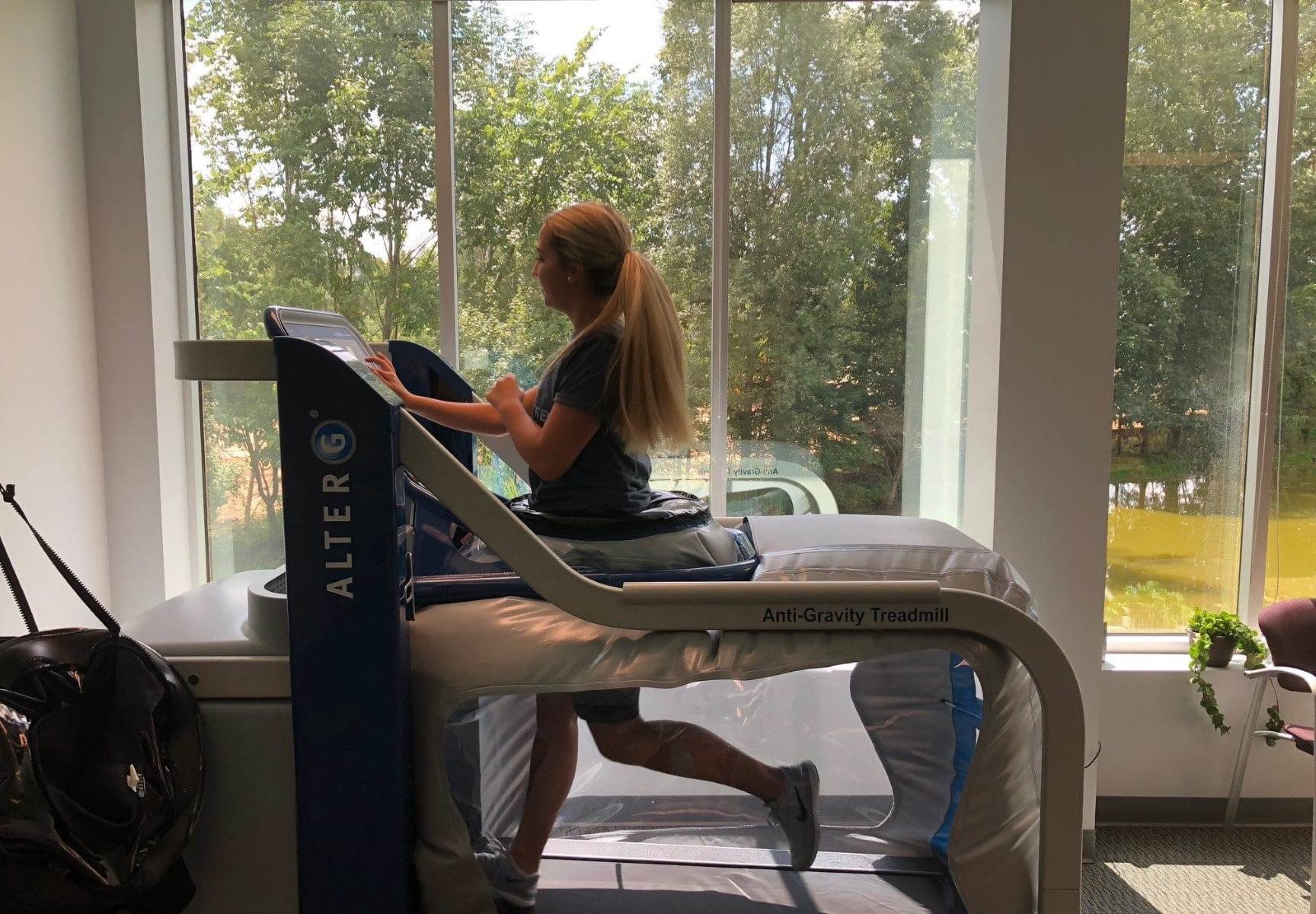

Featured
How Does Anti-Gravity Treadmill Work
Modified: January 2, 2024
Discover the fascinating science behind the anti-gravity treadmill. Learn how this featured fitness equipment defies gravity and aids in injury rehabilitation and training.
Introduction
In today’s world, fitness enthusiasts and athletes are constantly on the lookout for innovative tools and technologies that can enhance their training and performance. One such revolutionary technology that has been gaining traction in recent years is the anti-gravity treadmill. Designed to provide users with a low-impact workout experience, this state-of-the-art equipment is changing the game in the world of fitness and rehabilitation.
Imagine being able to run or walk without the strain and impact on your joints and muscles. This is the promise of the anti-gravity treadmill, which utilizes advanced technology to reduce the effects of gravity on the body. By doing so, it allows individuals to engage in cardio exercises without the risk of injury or excessive strain.
But how does this remarkable piece of equipment work? What are its benefits and how does it differ from traditional treadmills? In this article, we will explore the ins and outs of anti-gravity treadmills, providing you with a comprehensive understanding of this groundbreaking technology. So, let’s dive in and uncover the secrets behind the anti-gravity treadmill’s functioning and how it can revolutionize your fitness routine.
Overview of Anti-Gravity Treadmill Technology
The anti-gravity treadmill is a piece of exercise equipment that utilizes advanced technology to simulate the feeling of walking or running in a reduced-gravity environment. It achieves this by creating a differential air pressure system that lifts a portion of the individual’s body weight, thereby reducing the impact and stress on their joints.
At the heart of the anti-gravity treadmill technology is the concept of unweighting. By unweighting the individual, the treadmill allows them to exercise with less pressure on their joints, muscles, and bones. This makes it an ideal tool for rehabilitation, allowing individuals recovering from injuries or surgeries to engage in low-impact exercise and build strength without exacerbating their condition.
The technology behind the anti-gravity treadmill involves the use of an airtight chamber built into the treadmill’s frame. This chamber is designed to encase the user’s lower body, specifically the legs and waist. By sealing off this specific area, the treadmill is able to create a controlled environment where air pressure can be manipulated to reduce the user’s effective body weight.
By adjusting the air pressure within the chamber, the anti-gravity treadmill can provide varying levels of unloading or unweighting. This means that the user can easily customize their experience based on their specific needs and fitness goals. Whether they are looking to gradually return to running after an injury or simply want to reduce joint stress during daily workouts, the anti-gravity treadmill offers flexibility and adaptability.
It is important to note that anti-gravity treadmills are not limited to professional athletes or individuals recovering from injuries. They are also a popular choice among individuals who want to prevent joint pain and injuries, as well as those who are looking for an alternative form of cardio exercise that is gentler on their bodies.
Now that we have a brief overview of the technology behind anti-gravity treadmills, let’s dive deeper into the fundamental principles that make them work.
Understanding the Basic Principles of Anti-Gravity Treadmills
To truly grasp the functioning of anti-gravity treadmills, it is crucial to understand the basic principles on which they operate. At the core of these principles is the concept of differential air pressure. By utilizing this principle, anti-gravity treadmills create an environment where the user experiences reduced weight and impact while walking or running.
The basic principle of differential air pressure involves creating a pressure difference between the inside and outside of the airtight chamber that encases the user’s lower body. This pressure difference allows for the unweighting effect, wherein the user’s body weight is effectively reduced, protecting their joints and muscles from excessive stress.
When a person steps onto the anti-gravity treadmill, the air pressure inside the chamber is adjusted to a specific level. The pressure is set lower than the atmospheric pressure outside the chamber, creating a pressure differential. This differential creates an upward force that counteracts a portion of the user’s body weight, making them feel lighter and reducing the stress placed on their joints and muscles.
The amount of weight reduction can be adjusted by fine-tuning the air pressure inside the chamber. Higher air pressure will result in less unweighting, while lower air pressure will provide a greater unweighting effect. This allows users to have precise control over how much impact reduction they experience during their workout.
In addition to the differential air pressure, the technology behind anti-gravity treadmills also incorporates advanced cushioning and suspension systems. These systems further enhance the comfort and impact absorption, reducing the strain on the user’s joints and muscles.
By mimicking the feeling of reduced gravity, anti-gravity treadmills help individuals of all fitness levels to train, rehabilitate, and exercise more effectively and safely. Whether recovering from an injury, seeking to prevent joint pain, or simply looking to incorporate a low-impact cardio exercise into their routine, these treadmills offer an innovative solution.
Now that we have covered the basic principles behind anti-gravity treadmills, let’s explore the mechanics of the system and how it works in more detail.
The Role of Differential Air Pressure in Anti-Gravity Treadmills
One of the key components that differentiate anti-gravity treadmills from traditional treadmills is the utilization of differential air pressure. This innovative feature plays a crucial role in creating an environment where the user experiences reduced weight and impact, ultimately reducing the strain on their joints and muscles.
The primary function of the differential air pressure system in an anti-gravity treadmill is to create a pressure difference between the inside and outside of the airtight chamber that encases the user’s lower body. By adjusting this pressure difference, the treadmill can precisely control the level of unweighting experienced by the user.
When an individual steps onto the anti-gravity treadmill, the air pressure inside the chamber is carefully regulated to be lower compared to the atmospheric pressure outside. This pressure differential causes an upward force that counters a portion of the user’s body weight, effectively reducing the load on their joints and muscles.
The air pressure inside the chamber can be adjusted using a control panel or interface, allowing the user or a trained professional to fine-tune the unweighting effect. Higher air pressure will result in a smaller reduction in weight, while lower air pressure will provide a greater unweighting effect.
It is important to note that in an anti-gravity treadmill, the unweighting effect is not achieved by levitation or anti-gravity technology as the name may suggest. Instead, it is the result of manipulating air pressure to create a sensation of reduced weight, similar to what one might experience in a low-gravity environment.
The role of differential air pressure in anti-gravity treadmills is not only limited to reducing impact and stress on the user’s joints and muscles. It also allows for customized and controlled workouts. By adjusting the air pressure, individuals can simulate different levels of gravity, ranging from a reduced-weight workout to a full-weight workout.
This versatility makes anti-gravity treadmills highly adaptable to a wide range of fitness levels and rehabilitation needs. Whether it’s a professional athlete looking to maintain cardiovascular fitness while recovering from an injury or an individual seeking a low-impact workout option, the differential air pressure system offers a flexible and personalized experience.
Next, we will explore the mechanics of the anti-gravity treadmill system to gain a deeper understanding of how it functions to provide users with a unique and effective exercise experience.
The Mechanics of the Anti-Gravity Treadmill System
The mechanics of an anti-gravity treadmill system involve a combination of innovative design elements and advanced technology. By understanding how these components work together, we can gain a deeper appreciation for the effectiveness and versatility of this equipment.
At the core of the anti-gravity treadmill system is an airtight chamber that encases the user’s lower body, typically from the waist down. This chamber is made of a durable, yet flexible material that creates a secure and comfortable environment for the user.
Once inside the chamber, the individual’s body weight is supported by a combination of advanced cushioning and a differential air pressure system. The cushioning helps to absorb and distribute impact forces, reducing strain on the joints and muscles. This, combined with the differential air pressure, creates a feeling of reduced weight, allowing the user to move more freely and with less impact.
Within the chamber, there are strategically placed sensors and air compressors that monitor and adjust the air pressure in real-time. These sensors continuously measure the user’s weight distribution and gait pattern, ensuring that the unweighting effect is distributed evenly and in sync with their movements.
The air compressors, connected to the sensors, regulate the amount of air pressure inside the chamber. This adjustment can be done manually using a control panel or can be automated based on pre-set programs or the user’s specific needs.
As the user begins to walk or run on the anti-gravity treadmill, their movements cause changes in the air pressure within the chamber. The sensors detect these changes and relay the information to the compressors, which then adjust the air pressure accordingly to maintain the desired unweighting effect.
The ability of the anti-gravity treadmill system to dynamically adjust the air pressure in response to the user’s movements is a crucial feature. It allows for a smooth and seamless workout experience, ensuring that the user’s joints and muscles are protected throughout their exercise session.
Additionally, some anti-gravity treadmills are equipped with advanced tracking technology that provides feedback on the user’s gait, step length, and other relevant metrics. This data can be invaluable for rehabilitation purposes, as it allows healthcare professionals to monitor progress and tailor the program accordingly.
Overall, the combination of an airtight chamber, advanced cushioning, and a differential air pressure system, along with sophisticated sensors and compressors, forms the unique mechanics of the anti-gravity treadmill system. This integration of design and technology enables users to experience the benefits of reduced weight and impact while engaging in cardiovascular exercise and rehabilitation.
Next, we will delve into the numerous benefits that anti-gravity treadmills offer for rehabilitation purposes.
Benefits of Using Anti-Gravity Treadmills for Rehabilitation
Anti-gravity treadmills have become a valuable tool in the field of rehabilitation, offering a multitude of benefits for individuals recovering from injuries or surgeries. From improving mobility to enhancing strength and reducing pain, these treadmills have revolutionized the rehabilitation process. Let’s explore some of the key benefits of using anti-gravity treadmills:
1. Reduced Impact and Joint Stress:
One of the primary advantages of anti-gravity treadmills is their ability to provide a low-impact workout. By unweighting a portion of the user’s body weight, these treadmills significantly reduce the stress placed on the joints, muscles, and bones. This allows individuals to engage in cardiovascular exercise without exacerbating their condition or risking further injury.
2. Faster Rehabilitation:
Anti-gravity treadmills have been shown to expedite the rehabilitation process. By unweighting the body, they create a safe and controlled environment where individuals can gradually regain their strength, range of motion, and mobility. The ability to customize the level of unweighting allows healthcare professionals to tailor the rehabilitation program to the specific needs and capabilities of each patient.
3. Improved Muscle Activation:
Engaging in exercise on an anti-gravity treadmill requires individuals to actively engage their muscles to maintain balance and stability. This promotes muscle activation and development, helping to rebuild strength and restore function in the affected areas. Additionally, the reduced load on the joints allows for more efficient muscle recruitment, resulting in enhanced muscle activation and coordination.
4. Enhanced Cardiovascular Fitness:
Recovering from injuries or surgeries can often limit an individual’s ability to engage in cardiovascular workouts. Anti-gravity treadmills offer a solution by providing a low-impact form of cardio exercise that does not strain the cardiovascular system. This allows individuals to maintain or improve cardiovascular fitness levels without compromising their recovery process.
5. Pain Reduction:
By reducing the impact and stress on the joints and muscles, anti-gravity treadmills can help alleviate pain during rehabilitation. The unweighting effect provides a reprieve from weight-bearing activities that may exacerbate pain or discomfort. This can be especially beneficial for individuals recovering from conditions such as osteoarthritis, stress fractures, or joint surgeries.
6. Confidence Building:
Recovering from an injury or surgery can be a daunting and challenging process. Anti-gravity treadmills offer individuals a safe and supportive environment to regain their confidence and trust in their body’s abilities. The ability to gradually increase the intensity and difficulty of the workouts helps individuals build strength, stability, and overall confidence in their rehabilitation journey.
7. Versatility and Customization:
Anti-gravity treadmills offer a high degree of versatility and customization. Whether adjusting the level of unweighting or incorporating different exercises and therapies, healthcare professionals can adapt the treadmill to meet the unique needs of each patient. This versatility allows for a more comprehensive and tailored rehabilitation program.
Overall, anti-gravity treadmills have emerged as a game-changer in rehabilitation. By reducing impact, improving strength, and providing a safe and controlled environment, these treadmills are transforming the way individuals recover from injuries and surgeries.
Next, we will compare anti-gravity treadmills to traditional treadmills, highlighting the unique features and advantages of each.
Comparison of Anti-Gravity Treadmills to Traditional Treadmills
When it comes to choosing the right treadmill for your fitness goals or rehabilitation needs, it’s essential to weigh the advantages and disadvantages of different options. In this section, we will compare anti-gravity treadmills to traditional treadmills, highlighting the unique features and benefits of each.
1. Impact on Joints and Muscles:
One of the key differences between anti-gravity treadmills and traditional treadmills is the impact on joints and muscles. Traditional treadmills exert full weight-bearing pressure on the body, which can lead to strain and impact-related injuries. In contrast, anti-gravity treadmills provide a reduced impact workout by unweighting a portion of the body weight, making them ideal for individuals with joint pain, arthritis, or recovering from injuries.
2. Customization and Adaptability:
Anti-gravity treadmills offer a high level of customization and adaptability. The ability to adjust the level of unweighting allows for a tailored rehabilitation program that matches the individual’s specific needs and capabilities. Traditional treadmills, while versatile in speed and incline adjustments, lack the ability to provide customized unweighting, making them less suitable for individuals with specific rehabilitation goals.
3. Rehabilitation Benefits:
Anti-gravity treadmills have become a preferred choice for rehabilitation purposes due to their ability to provide low-impact exercise and targeted unweighting. They have been proven effective in helping individuals recover from injuries, surgeries, or conditions that require controlled loading. Traditional treadmills, on the other hand, may not be as suitable for rehabilitation due to the higher impact and absence of unweighting capabilities.
4. Cardiovascular Workout:
Both anti-gravity treadmills and traditional treadmills offer cardiovascular workout options. However, the reduced impact provided by anti-gravity treadmills allows individuals with joint or muscle issues to engage in cardiovascular exercise without exacerbating their conditions. Traditional treadmills provide a more intense cardio workout due to the full weight-bearing nature, making them suitable for individuals without specific joint or muscle limitations.
5. Price and Accessibility:
Traditional treadmills are more widely available and often come at a lower price point compared to anti-gravity treadmills, which incorporate specialized technology and design. While traditional treadmills can be a more affordable option for general fitness purposes, individuals with specific rehabilitation needs may find the investment in an anti-gravity treadmill well worth the cost for its targeted benefits.
Ultimately, the choice between an anti-gravity treadmill and a traditional treadmill depends on your specific needs and goals. If you are looking for a low-impact workout or are undergoing rehabilitation, an anti-gravity treadmill may be the ideal choice. On the other hand, if you have no specific limitations and want a more intense cardio workout, a traditional treadmill may be a suitable option.
Now that we have compared these two types of treadmills, let’s wrap up this article by summarizing the key takeaways.
Conclusion
The advent of anti-gravity treadmills has revolutionized the fitness and rehabilitation industry. These innovative pieces of equipment, powered by advanced technology and design, offer a wide range of benefits for individuals of all fitness levels and those recovering from injuries or surgeries.
By utilizing the principle of differential air pressure, anti-gravity treadmills provide a reduced impact workout that minimizes strain on the joints and muscles. This unweighting effect is instrumental in creating a safe and controlled environment for rehabilitation, allowing individuals to gradually rebuild strength, mobility, and confidence.
Anti-gravity treadmills excel in their ability to customize and adapt workouts to meet individual needs. With the capability to adjust the level of unweighting, individuals can tailor their exercise programs to specific goals and desired intensity.
When compared to traditional treadmills, anti-gravity treadmills outshine in terms of their rehabilitation benefits and reduced impact. Traditional treadmills, on the other hand, offer a more intense cardiovascular workout and are often more affordable and accessible.
In conclusion, anti-gravity treadmills have emerged as a game-changer in the fitness and rehabilitation realm. They provide a safe and effective way to exercise and recover, offering reduced impact, improved strength, and enhanced cardiovascular fitness. Whether you are an athlete looking for a low-impact training option or an individual on the path to recovery, the benefits of anti-gravity treadmills cannot be overstated.
So, consider incorporating an anti-gravity treadmill into your fitness routine or rehabilitation program and experience the transformative power of this cutting-edge technology.

